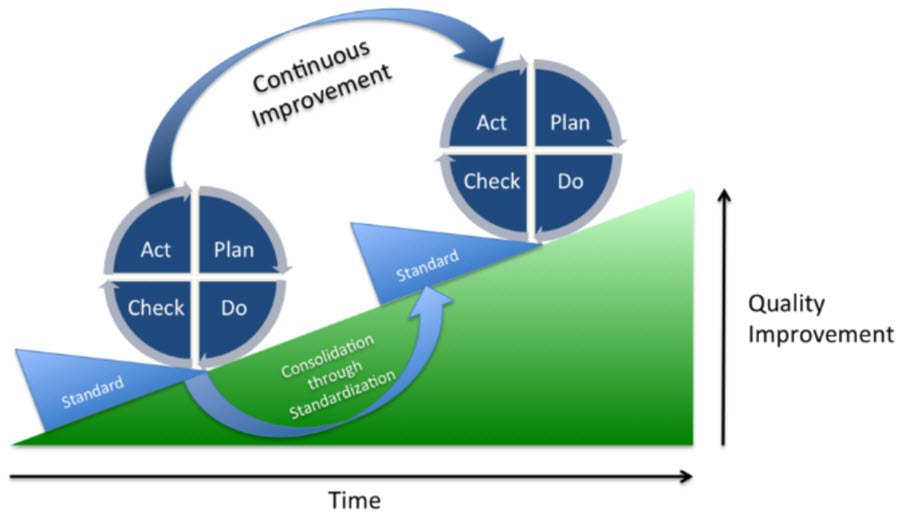PDCA cycle is a potent tool for continuous improvement that is able to improve anything. It looks effortless, but it is an exceptionally powerful tool. The more you use this tool, the more improvement you will witness.
So, PDCA stands merely for Plan, Do, Check, and Act. Some people refer PDCA as PDSA, and the S stands for study in it. Both are the same thing, so there is no need to get confused between them.
The First Step Is Plan
So, the plan is the first step. How to achieve something is the plan. First, you decide what outcomes you want. You start working on it to set the objectives, then you plan on the activities and projects you are required to get the desired outcomes.
You also need to set the measurements, success criteria, or key performance indicators that you will use to witness if the result is successfully achieved or not.
The Second Step Is Do
In this step, you have to execute and implement what you planned in the first step.
The Third Step Check or Study
When both initial steps are done, then you study or check the result to see what actually happened.
So what happened? Did you get the desired results that you wanted or expected? Or did you get different results? Were the results wanted or unwanted?
If things did not go according to the plan you need to understand why not? Are the current things worse or better? Or are they are same as they were?
If the result is better, can it be improved more? If it is worse, then why are they are worse and what are you going to do next? If the result is same, then why it is?
Are you required to do things differently, implement items for an extended period, or change some of the aspects? And it continues.
Some of the techniques and approaches you are going to use on this stage include monitoring, studying, measuring, observing the data you gather, discussion and analyzing the audit results.
The Fourth Step Is Act
The last phase is to take action on it, which is on the basis of your analysis and result you got from the first three steps. If the result was good, then you should continue it on your system.
If things did not come out well, or they require further time, then you should improve the plan or maybe some part of it. You can even commence it once again from the very start.
PDCA Cycle
So, all this PDCA activity takes you to next stage or another round of PDCA. You need to Plan (step one) again. However, you will do this with new knowledge now.
You will repeat Do (step 2), yes, there is new knowledge and information again. Therefore, you repeat Cycle (step 3) and Act (step 4). The cycle keeps on rotating in a continuous improvement loop.
With each PDCA cycle, the system will keep on improving. It is an irreproachable cycle, the more you apply it, the more improvement you are going to achieve.
The PDCA cycle is also known as continuous improvement or Shewhart’s cycle. Shewhart invented this cycle.
Where Does Failure Happen
Most of the organizations go for the Planning and Doing parts. Numerous businesses feel comfortable on the second stage (Do). On this stage, the company gets the business and sale. All these things seem like the real work.
On the other hand, they fall short in the other half of the PDCA cycle. For instance, they Plan and Do, but they do not go to the Check and Act stage to see what happened and what actions do require after the ultimate outcomes.
Some of the organizations produce a Plan, but they rarely apply or use it. They do not take out their time to study it or compare it with the previous situation of the company.
The PDCA cycle only improve continuously when organizations pay attention on all four stages, and they keep on repeating the cycle. When they execute the cycle, the improvement occurs consistently and become the way of life.






